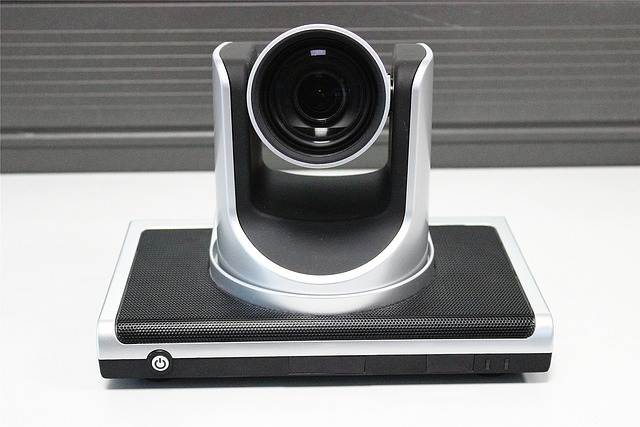DivX, a longstanding video coding standard, ensures high-quality playback and compatibility with Windows Media Player (WMP) on Windows systems. To play DivX videos in WMP, download the latest version of WMP from Microsoft, import your DivX files via dragging or "Add" button, enable the DivX Codec under settings, and share videos seamlessly on platforms like YouTube, Vimeo, Instagram, and Facebook. Troubleshooting challenges involves checking WMP settings for DivX support, installing codec packs, using right-clicking options in WMP Classic, and keeping WMP updated for optimal compatibility.
Discover the power of DivX for seamless video creation and sharing across multiple platforms. This guide teaches you step-by-step how to play DivX videos using Windows Media Player, ensuring compatibility and optimal playback. From understanding the DivX format’s advantages to troubleshooting common issues, you’ll master the art of importing and sharing high-quality videos. Learn the secrets to smooth video playback and enhance your digital experience.
Understanding DivX Format and Its Compatibility

The DivX format is a video coding standard that has been around for over two decades, known for its high-quality video compression and efficient playback across various devices. This format allows users to create and share videos with minimal loss in quality, making it ideal for streaming and online distribution. One of the key advantages of DivX is its compatibility with multiple platforms and media players.
On Windows systems, DivX videos can be seamlessly played using Windows Media Player, a built-in multimedia application. The player supports a wide range of video codecs, including DivX, making it easy for users to enjoy their DivX content without the need for additional software installation. This compatibility ensures that creators and viewers alike can share and access high-quality videos on Windows devices effortlessly.
Downloading and Installing Windows Media Player

To start enjoying your videos with Windows Media Player, the first step is downloading and installing it. Windows Media Player (WMP) is a versatile media player that supports a wide range of video formats, including DivX. You can download the latest version from Microsoft’s official website. The installation process is straightforward—just follow the on-screen instructions to complete the setup.
Once installed, you can easily import your DivX videos into WMP by dragging and dropping them onto the player window or using the “Add” button to browse and select your video files. This simple integration ensures a seamless viewing experience, allowing you to play, pause, and adjust settings without any hassle.
Enabling DivX Codec in Windows Media Player Settings

To play DivX videos seamlessly in Windows Media Player, you need to ensure that the DivX Codec is enabled. This process involves navigating through the player’s settings to find and activate the necessary components. Start by opening Windows Media Player and selecting “Settings” from the menu. Then, click on “Format” and choose “Advanced.” Here, locate the “Codecs” section and enable the DivX video codec. This simple step will allow you to play DivX files without any compatibility issues.
Once enabled, you can simply drag and drop your DivX videos into the player’s window or select them from the “Open” menu. Windows Media Player should now recognize and play these videos fluently, providing a seamless viewing experience. This process is straightforward and allows users to enjoy their DivX content without needing additional software or complex configurations.
Importing and Playing DivX Videos

DivX videos, known for their high-quality encoding and wide compatibility, can be easily imported and played using Windows Media Player (WMP). To get started, simply download your DivX video file and locate it on your computer. Next, open Windows Media Player and click on “File” in the top menu bar. Select “Open” or use the keyboard shortcut Ctrl+O to navigate to the video’s location. Find the desired DivX file and choose it to initiate the import process.
Once imported, WMP will automatically detect the video format and start playing it without any issues. This seamless integration ensures that you can enjoy your DivX videos just as you would with any other supported media type. Whether sharing them on social media platforms or uploading to video-sharing sites, knowing how to play DivX on Windows Media Player is a valuable skill for content creators and casual users alike.
Sharing Videos on Popular Platforms

Sharing videos on popular platforms has become seamless with the right tools. One versatile format that ensures compatibility across various sites is DivX. This codec, playable directly by Windows Media Player, allows for high-quality video playback while maintaining file sizes that are manageable for online sharing.
Whether you’re uploading to YouTube, Vimeo, or social media platforms like Instagram and Facebook, using DivX ensures your videos maintain their visual integrity without sacrificing accessibility. Simply encode your footage in DivX format and it’s ready to go, compatible with a wide range of devices and players, making the sharing process smooth and efficient.
Troubleshooting Common Issues with DivX Playback

Many users encounter challenges when trying to play DivX files, especially on older versions of Windows Media Player. The good news is that troubleshooting these issues is straightforward and can be achieved with a few simple steps. If your DivX videos are not playing smoothly or at all, check your media player’s settings to ensure it’s configured to support DivX codecs. You may need to install additional codec packs like K-Lite Codec Pack, which includes DivX, to enable proper playback.
For those using Windows Media Player Classic (WMP), right-clicking on the video and selecting “Properties” can provide further options for managing codecs. Checking the “Use hardware acceleration” box can often improve performance and playbacks speeds. Additionally, updating your media player to the latest version ensures compatibility with modern DivX standards. Following these basic troubleshooting techniques should help you overcome common DivX playback problems on Windows systems.
DivX format is an excellent choice for content creators looking to share high-quality videos across various platforms. By following this guide, you’ve learned how to play and share DivX videos seamlessly using Windows Media Player. From understanding the format’s compatibility to troubleshooting playback issues, you’re now equipped to enjoy and distribute your videos without hassle. Dive into the world of video sharing with confidence, knowing that DivX and Windows Media Player make a powerful duo for all your multimedia needs.
